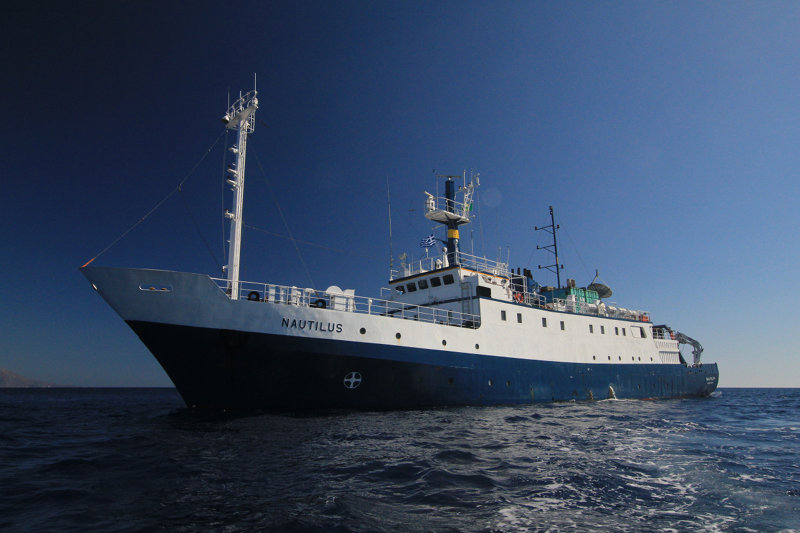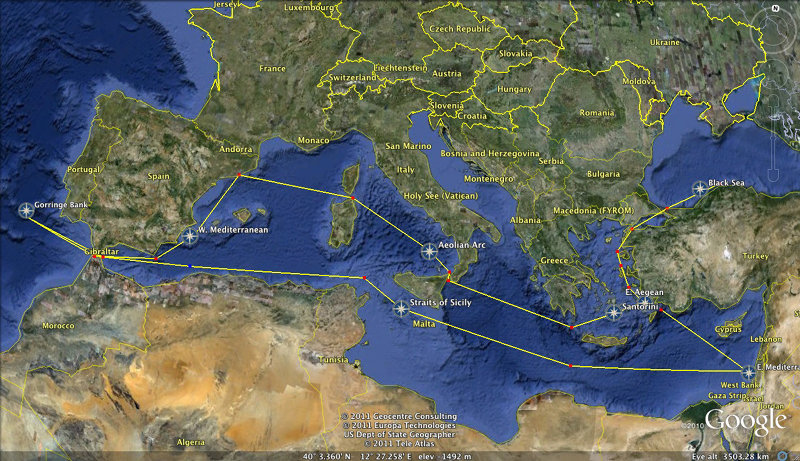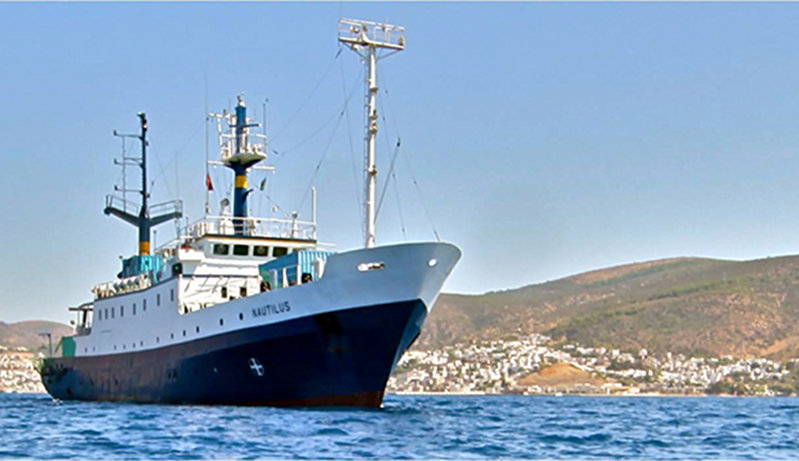
By Katherine Croff Bell, PhD, Vice President and Chief Scientist, E/V Nautilus Exploration Program, Ocean Exploration Trust
and Alexandra Bell Witten, Director of Programs and Coordinator of Outreach/Media, E/V Nautilus Exploration Program, Ocean Exploration Trust
July 21 - November 16, 2011

The E/V Nautilus Image courtesy of Tom Pierce. Download larger version (jpg, 7.6 MB).
The Institute for Exploration (IFE), Ocean Exploration Trust (OET) and University of Rhode Island (URI) Center for Ocean Exploration (COE) are collaborating to lead an expedition during the summer and fall of 2011 to conduct ocean exploration projects in the Black, Aegean, and Mediterranean Seas, and eastern Atlantic Ocean. The first two legs took place off the Turkish Black Sea and Aegean coasts, focused on seafloor imaging. The main objectives of the subsequent six legs are to explore the geology and biology of the Santorini volcanic field in Greece, underwater volcanic fields off Italy, escarpments off the coast of Spain, Gorringe Bank off Portugal in the Atlantic, and the continental shelf and abyssal plain off Israel.
The supplement to the March 2012 issue of Oceanography is dedicated to the continuing expeditions of the NOAA Ship Okeanos Explorer and Exploration Vessel (E/V) Nautilus. The mission of these two ships is to explore the most unknown areas of the world's ocean, while engaging the interest of scientists, educators, students, and the general public in undersea exploration and discovery through active participation in real time.
Teams are operating from the Exploration Vessel (E/V) Nautilus, a 64-meter research vessel based in Yalikavak, Turkey, operated by the Ocean Exploration Trust. Nautilus is equipped with the remotely operated vehicles (ROVs) Hercules, Argus, Diana, and Echo, operated by IFE. A high bandwidth satellite system on board is in use for the duration of the field season to facilitate remote science and education via the Inner Space Center (ISC) at the URI Graduate School of Oceanography and Exploration Command Consoles (ECCs) located around the world.
The work supported by NOAA OER on the E/V Nautilus and the NOAA Ship Okeanos Explorer is part of NOAA's systematic program in ocean exploration enabled by telepresence technologies.

A photo of the 2011 Nautilus trackline in Google Maps. Image courtesy of Google Maps and Katy Croff, E/V Nautilus Program, Ocean Exploration Trust. Download larger version (jpg, 944 KB).

Another view of the E/V Nautilus. Image courtesy of Ocean Exploration Trust. Download larger version (jpg, 265 KB).